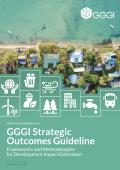
This document outlines the concepts, approaches, and methodologies used to estimate expected strategic outcome (SO) impacts of current projects and to develop approximate future targets for impacts based on the institute’s planned future activities.
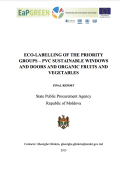
This report provides an overview of ecolabels that are currently used both in the European Union and at the national level, and an opportunity to apply them to both priority groups of products. The ultimate scope of the study is to define a list of ecolabels to be used for both priority groups, based on an analysis of the existing ecolabels.
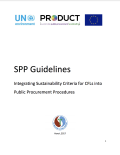
To ensure Sustainable Public Procurement (SPP) for key purchases, that guide recommends that environmental, social, and economic criteria should be applied, in this case, to select sustainable CFL products.
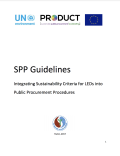
To ensure SPP for key purchases, environmental, social, and economic criteria should be applied, in this case, to determine sustainable LEDs. This guidance details criteria on technical specifications for LED lights, inclusive of sustainability requirements.
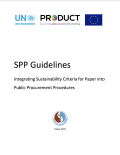
In the selection of paper products, in addition to the current regulation under the Law on Procurement, more environmental, social, and economic sustainability criteria should be used in Vietnam. These criteria are explained in this guidance.
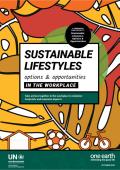
Workplaces can support and motivate tangible shifts in their employees’ and customers’ lifestyles towards sustainability. These efforts target those working with companies, organizations and individuals who are open and willing to adopt sustainable lifestyles practices but need some help or guidance along the way. Companies can incentivize employees and customers to adopt sustainable ways of eating, moving, consuming, living and engaging in leisure activities, and demonstrate these actions at work. The set of actions presented in this report can support employees and customers to enhance sustainability in their daily lives. The actions have been prioritized because they are more effective at reducing the ecological footprint. Based on ecological and carbon footprint data, we can identify priority lifestyles areas that contribute to ecological impacts such as reducing wasted food or shifting transportation modes. For the highest impacts, link options together, build on existing activities, and partner with others.
The OECD Due Diligence Guidance provides detailed recommendations to help companies respect human rights and avoid contributing to conflict through their mineral purchasing decisions and practices. This Guidance is for use by any company potentially sourcing minerals or metals from conflict-affected and high-risk areas. The OECD Guidance is global in scope, and applies to all mineral supply chains.

All around the world climate change, policies to respond to it, and the related economic restructuring have deep implications for jobs. The ILO initiated the Green Jobs Assessment Institutions Network (GAIN) in 2012 to support development of training tools that enhance the capacity of national institutions to build country-specific green employment projection models. This training guidebook has been produced to serve that purpose.
One of the keys to making sustainable development policies successful in terms of environmental, social, and economic outcomes is to ensure the right skills are available when and where they are needed. Countries face different challenges and choose to respond in different ways. This guide focuses on understanding and measuring the skills implications of those challenges and response choices. It provides guidance on how to embark on the identification of current and anticipation of future skills needs for the green economy and green jobs.

A “sustainable lifestyle” is a cluster of habits and patterns of behaviour embedded in society and facilitated by institutions, norms and infrastructures that frame individual choice, in order to minimize the use of natural resources and generation of wastes, while supporting fairness and prosperity for all. This guidance will help policymakers, individuals and other stakeholders understand what a holistic approach to lifestyle means and how different contexts require different lifestyle solutions. It does not set out to define what "the" sustainable lifestyle looks like. Instead, it can help guide a range of initiatives that enable lifestyle choices that contribute to sustainability
